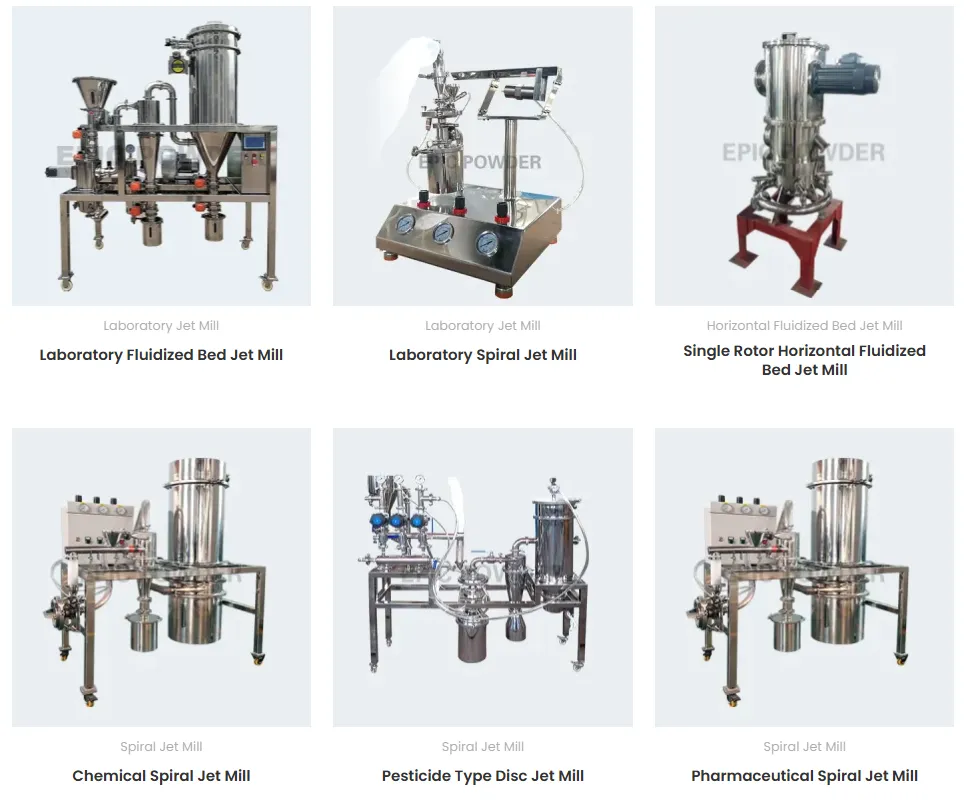Iron oxide pigments, primarily including red, yellow, black, and brown varieties based on iron oxides. They have excellent dispersibility, lightfastness, and weather resistance. Among these, iron oxide red is the most widely used. While precipitated iron oxide pigments are initially very fine, they tend to form large agglomerates during filtration and drying. This is due to van der Waals forces, hydrogen bonding, and electrostatic charges. These agglomerates prevent their direct use in high-end coatings, making jet pulverization an essential step for achieving ultrafine iron oxide particles.

Jet pulverization, one of the most common methods for ultrafine grinding, utilizes high-speed gas streams to impart energy and break down solid materials. Researchers successfully produced easily dispersible, ultrafine iron oxide pigments using a wervelbedstraalmolen system. Under specific conditions, they achieved notable production rates and fineness levels for different iron oxide pigments.
The specific control requirements and common issues in the jet milling process are as follows:
1. Jet Milling Process Overview
This process primarily consists of a fluidized bed or schijf straalmolen, an air compressor system, feeding, mixing, and dispersion agent addition systems, quantitative feeding devices, screening, de-ironing, dust collection, and packaging systems.
2. Key Control Points for Jet Milling
(1) Fineness & Output Adjustment:
Adjusting the classifier speed in a fluidized bed jet mill directly impacts the Hegman fineness and output.
(2) Preventing Hopper Bridging:
Installing a vibrator on the screw feeder prevents material bridging, ensuring consistent feed rates and stable output.
(3) Process Parameter Adjustment:
Work pressure and feed rate can be adjusted within limits to influence product quality.
(4) Color Change Post-Grinding:
Jet pulverization can alter the iron oxide pigment’s color. Higher pressure may intensify this change, but grinding parameters are not recommended for large-scale color adjustment.
(5) Fineness vs. Purity:
Product purity is generally lower than its fineness value and is influenced by raw material residue content. Ultrafine jet milling improves purity but cannot make it equal to fineness.
(6) Feed Rate Control:
The screw feeder frequency can control the production rate. Feed quantity relates to material bulk density and system sealing.
(7) Optimizing Work Pressure:
Increasing work pressure can improve fineness and reduce viscosity, but only up to a certain limit.

(8) Nozzle and Feed Alignment:
The Venturi feed inlet must align with the jet mill’s grinding chamber upper liner. Misaligned grinding nozzles can cause material blow-back.
(9) Product Fineness Factors:
Final fineness depends on the raw material’s production method, process conditions, particle morphology, crystal shape, and agglomerate size.
(10) Oil Absorption & Viscosity:
For yellow iron oxide, these properties are also tied to raw material characteristics. Additives or physical pressing can reduce them.
(11) Addressing Dust Leakage:
Dust leakage stems from system pressure imbalance, potentially caused by low feed rates or clogged filter bags in the dust collector.
(12) Dust Collector System Maintenance:
The system must handle significant exhaust air to maintain operational stability. Clogged filter bags, caused by aging, sticky materials, or high moisture, increase backpressure and require cleaning.
(13) Final Quality Control:
Magnetic separators and screens are crucial final steps to remove metallic and other foreign contaminants, ensuring high product quality after the jet pulverization process.
EPIC-poedermachines
EPIC Powder Machinery is a leading provider of advanced powder processing solutions, specializing in the design and manufacturing of high-performance jet mills. Our expertise in jet pulverization technology enables precise particle size control for demanding applications like iron oxide pigments. Epic Powder delivers efficient, reliable systems that help our clients achieve superior product quality and enhanced operational performance.